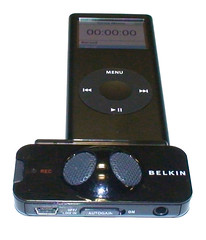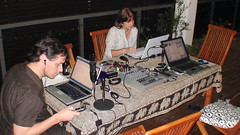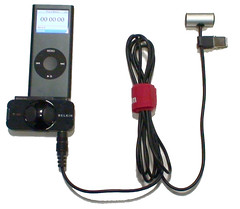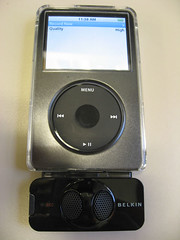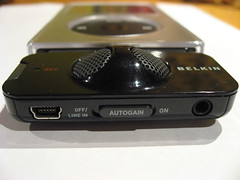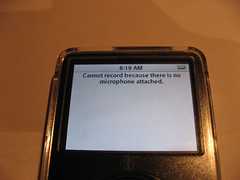Podcast troubleshooting
Problem number #1 - Limited number of podcasts showing in iTunes
I have for some time wondered why I only see 25 or so podcasts in iTunes when there are many more available on the podcast. This was a frustration late last year when I podcast 2 conferences back to back, elearn07 and mlearn07. Subscribers using iTunes would only see 20 or so episodes, effectively rendering invisible most of the conferences.
The podcast comprises a blogger blog utilising a separate feedburner feed for the iTunes/podcast feed.
Late last year I implemented a workaround by implementing the new labels in blogger which allowed me to filter the posts to a specific conference. This assisted in viewing the specific conference in the blog but did not solve the iTunes issue. I was not about to create custom feedburner feeds for each label feed !
Well tonight I found the solution.
See feedburner has a 512 Kb limit on the source feed, over this and it falls over. By default it is set to only scan a small number of posts, well within the 512 Kb limit. You can manually set the number of posts by using the following code as the source url
http://myblogname.blogspot.com/feeds/posts/default?max-results=xwhere x can be any integer value between 1 and 500
If you set it high it may take on more than the 512 Kb and fall over so I just experimented until it worked, mine was fine @ around 120.
see a full explanation here
This fixed my problem and I now see a years worth of podcasts in iTunes :>
Problem number #1 - mp4 file was not showing up in iTunes
I have recently decided to add vodcast episodes to TalkingVTE. So I added my new post with a link to a *.mp4 file.
Result, completely invisible to iTunes. :<
Turns out the servers mime type was not set to deliver mp4 so it returned a file not found error despite the correct file path.
Easy, I asked the admin to set the following on the server
MIME type = video/mp4
file type = mp4
Now the file could be found however still not post appearing on iTunes.
Turns out the problem was I had embedded a youtube video above my url link to the mp4 file and feedburner was setting this as the enclosure instead.
Removed the offending embedded video and it all now works. :>
Now for some more vodcasting with the assistance of a recently installed premiere Elements 4.0
Labels: podcasting


